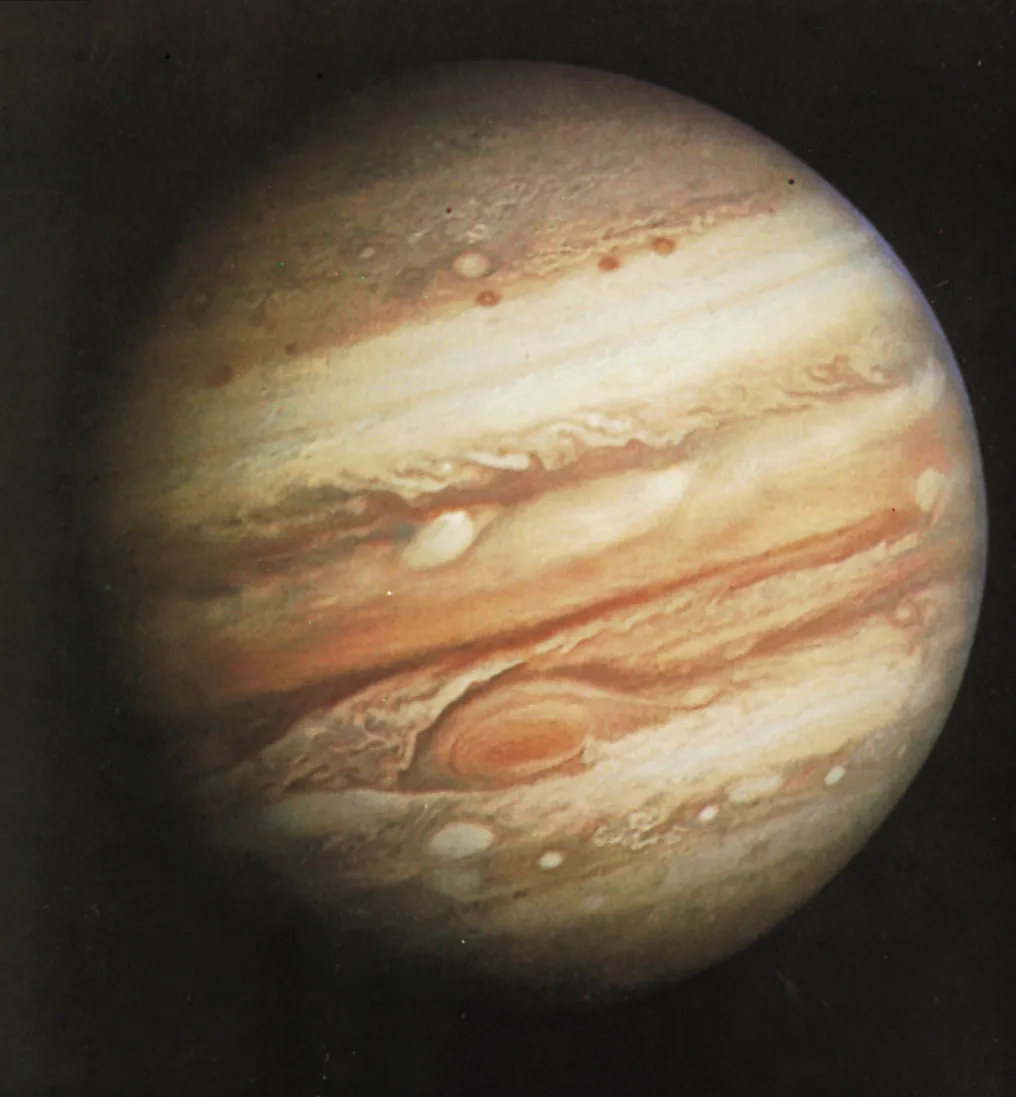Jupiter is the fifth planet from the Sun and the largest in the Solar System. It is a gas giant with a mass one-thousandth that of the Sun, but two-and-a-half times that of all the other planets in the Solar System combined. Jupiter has been known to astronomers since antiquity. It is named after the Roman god Jupiter, who was the god of thunder and lightning. In 2012 it was visited by NASA’s Juno spacecraft, which entered into orbit around Jupiter on July 4, 2016.
Jupiter is composed primarily of hydrogen with a quarter of its mass being helium; it may also have a rocky core of heavier elements. The outer atmosphere is visibly segregated into several bands at different latitudes, resulting in turbulence and storms such as the Great Red Spot. Surrounding Jupiter is a faint planetary ring system and numerous moons—sixty-seven in total—including Io, Europa, Ganymede and Callisto (the Galilean moons). These four satellites are much larger than all other known natural satellites orbiting any other planet in our Solar System combined. Ganymede, Europa & Callisto have sufficient internal heat to drive geological activity including volcanism and create subsurface oceans of liquid water despite their low surface temperatures due to tidal heating from Jupiter’s gravity pulling on them as they orbit.
The planet was first visited by Pioneer 10 on March 3 1973 followed by Pioneer 11 just over a year later on 1974 April 6 becoming the first spacecraft to visit an outer planet & map its magnetic field. Nine years later Voyager 1 became first probe to provide detailed images of Jovian clouds when it flew past at a distance 5 million km on 1979 March 5. Although Voyager 2 had encountered some technical problems which limited its observations it still managed to image most of Jupiter’s moons during its encounter 1980 July 9 – August 5 coming as close as 500000 km. More recently NASA’s Galileo spacecraft performed an intensive two year primary mission mapping Jupiter’s magnetic field & providing data about Jovian rocks & minerals composition along with evidence for subsurface oceans beneath three Galilean moon’s surfaces before completing 14 further flybys during 8 years long extended mission until 2003. Currently there are no active missions at or en route to Jupiter however several proposals for future missions exist including direct sampling return missions & orbital observatories designed specifically for studying this giant gaseous world up close.””


